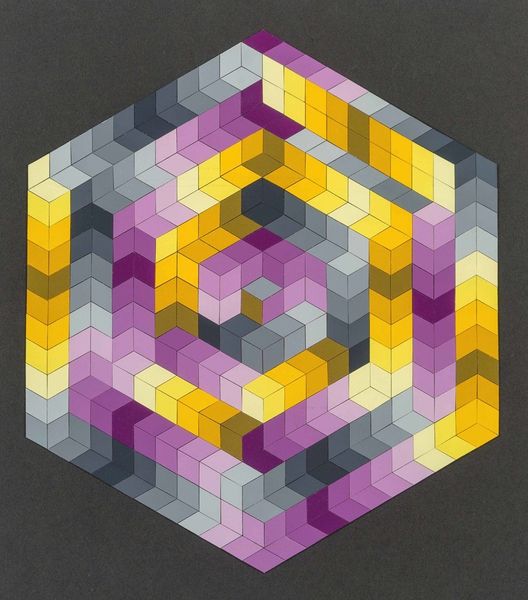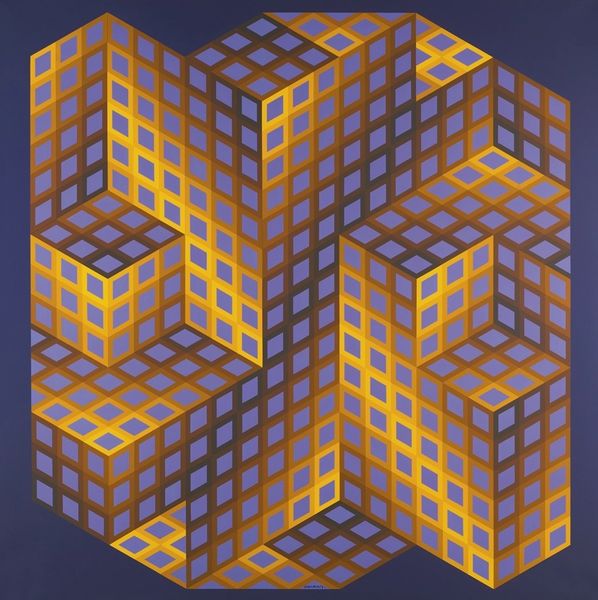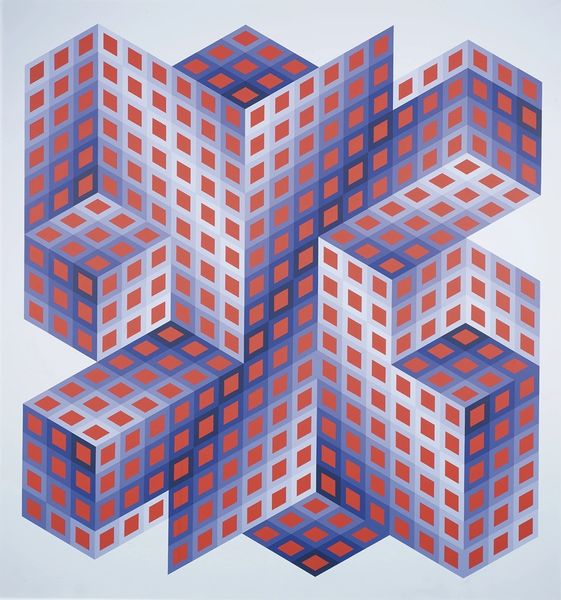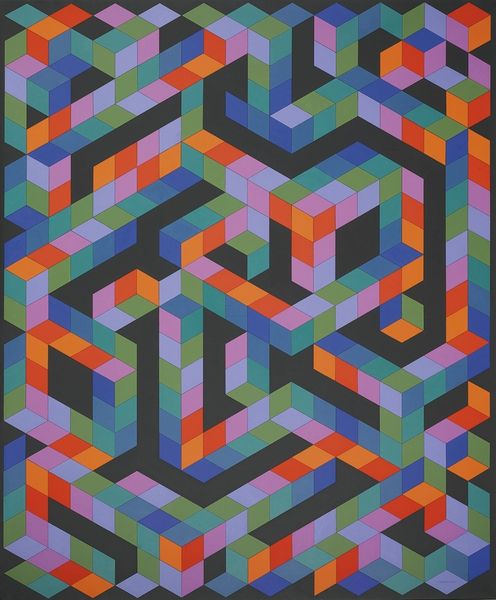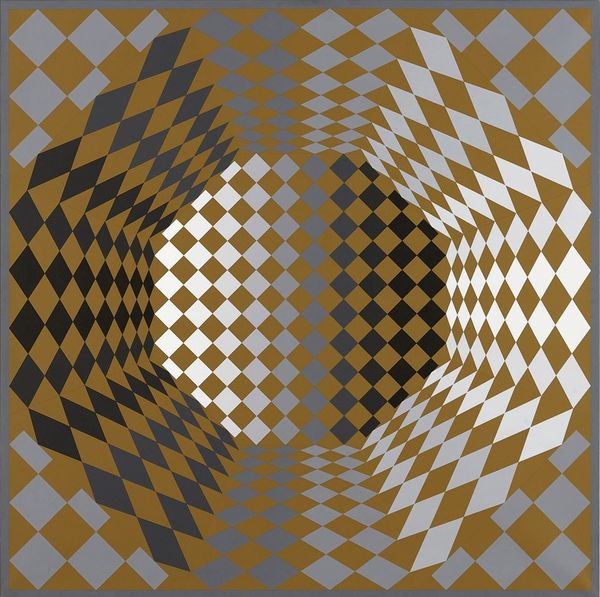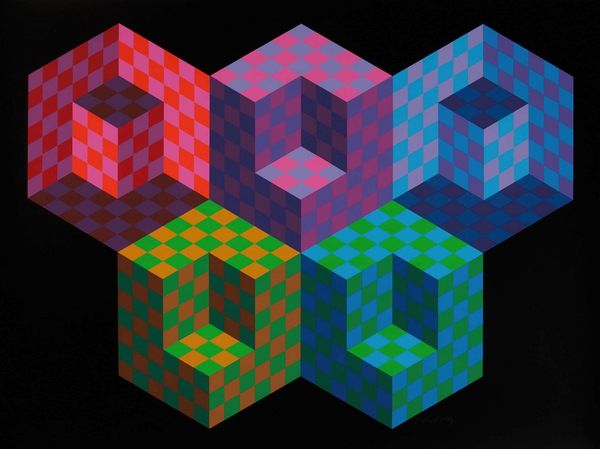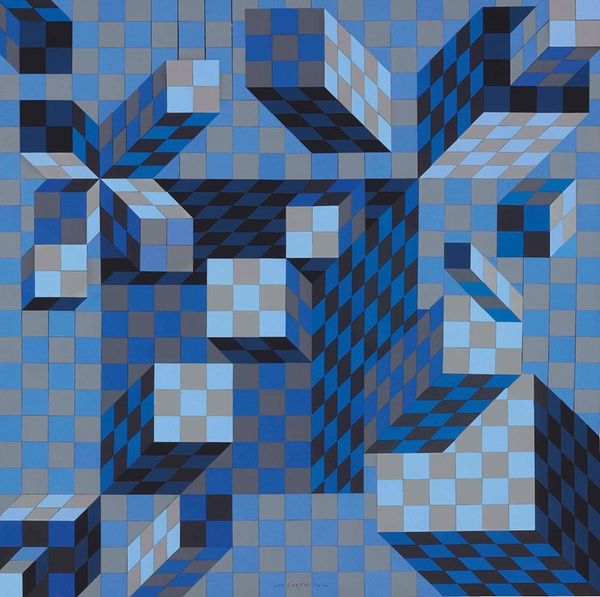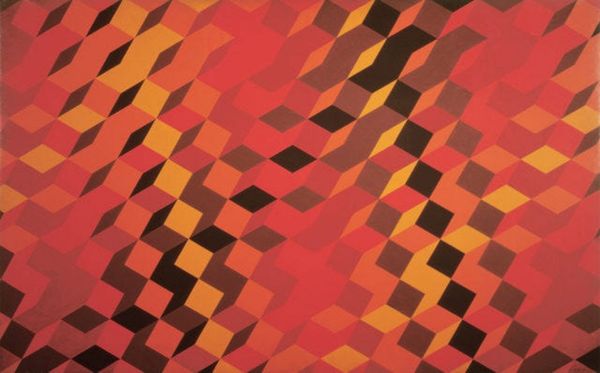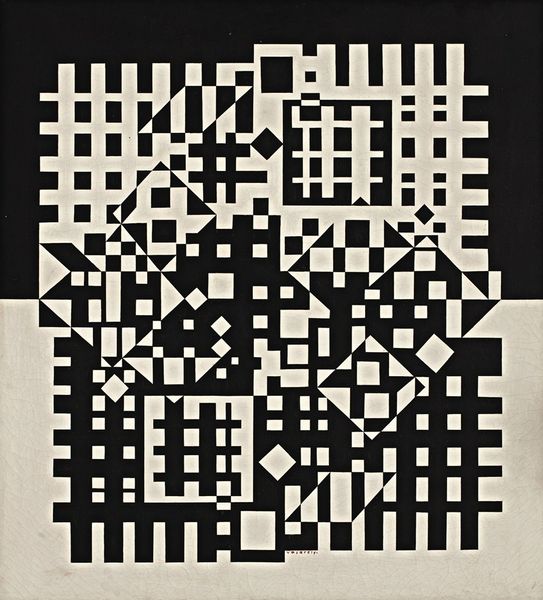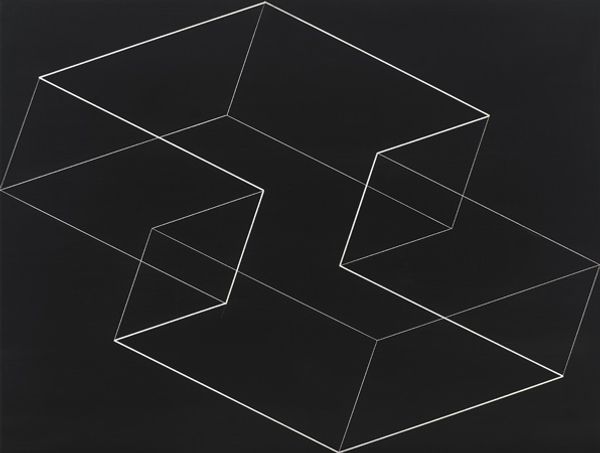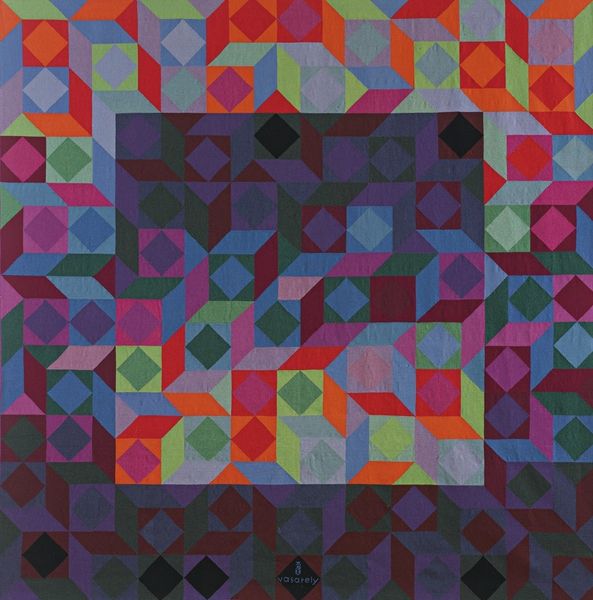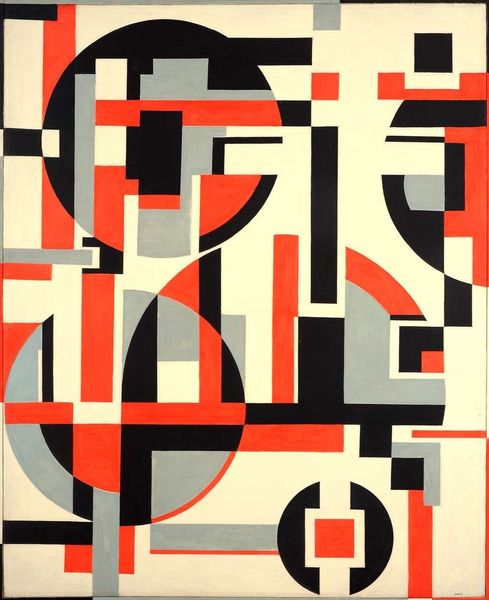
#
op-art
#
op art
#
abstract
#
geometric pattern
#
geometric
#
geometric-abstraction
#
modernism
#
hard-edge-painting
Copyright: Modern Artists: Artvee
Curator: As you stand before "City Neu," crafted by Victor Vasarely in 1984, what strikes you? Editor: Well, immediately, it has this mesmerizing depth despite being perfectly flat. The interplay of gray tones creates an illusion of three-dimensionality; these geometric forms appear to hover and recede. There's a strange tension. Curator: It's characteristic of Vasarely's engagement with Op Art, a movement very concerned with how perception and experience shaped visual art. The mid-century was consumed with such science. Consider that this piece emerged when computers were becoming ever-present: the allure of creating a technologically-influenced sense of simulated reality for mass audiences would have been substantial. Editor: Exactly. To me, those squares evoke modular, almost pixelated forms, so while geometric abstraction speaks of utopian ideals in early modernism, its echoes here almost suggests a more calculated view towards reality. I see symbols of urban planning gone awry or a kind of disorienting urban expansion that's almost sinister. Curator: Indeed, after the Second World War, cities had become the modern utopia, for better or worse. I agree that the hard-edge abstraction that Vasarely uses echoes how city architecture was presented at the time – precise, streamlined. Yet it's also impersonal and sometimes isolating, as seen through post-modern philosophical reflections during the time, when institutions were often challenged by many populations. It certainly encourages viewers to ask, who truly profits from city-life expansion? Editor: I'm particularly drawn to the monochromatic palette and how the geometric configurations recall cityscapes made of blocky buildings. These repeated forms almost hypnotize you. Do you see any particular cultural reference in Vasarely’s exploration, anything specific within urban culture? Curator: Well, I think Vasarely invites a broader reflection on institutional power in his Op Art constructions. During the Cold War era, the role of state and capitalist ideologies impacted art in subtle ways. As viewers, perhaps the optical illusions also force us to examine the deeper ideological structures – sometimes even mirages -- propping up everyday life. Editor: Fascinating to consider how the play of light and shadow embodies societal structures. A powerful visual illusion of our perception indeed!
Comments
No comments
Be the first to comment and join the conversation on the ultimate creative platform.
